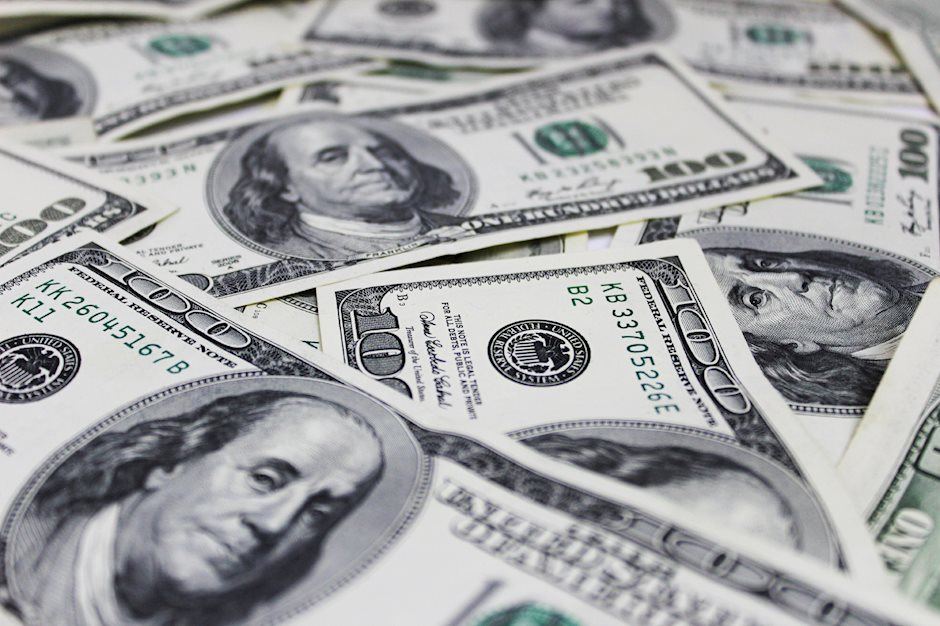Forex Today: BoC policy announcements, mid-tier US data to grab market attention

Here is what you need to know on Wednesday, September 4:
Major currency pairs continue to trade within familiar ranges early Wednesday as markets await the next catalyst. Eurostat will release Producer Price Index (PPI) data for July in the European session. In the second half of the day, July Goods Trade Balance, Factory Orders and JOLTS Job Openings data will be featured in the US economic docket. During the American trading hours, the Bank of Canada (BoC) will announce monetary policy decisions and the Federal Reserve will release its Beige Book later in the session.
The data from Australia showed in the Asian session that the country's Gross Domestic Product expanded at an annual rate of 1% in the second quarter, matching the market expectation. Meanwhile, Caixin Services PMI in China edged slightly lower to 51.6 in August from 52.1 in July. Following Tuesday's sharp decline, AUD/USD holds steady at around 0.6700 early Wednesday.
The BoC is forecast to lower the policy rate by 25 basis points (bps) to 4.25% following the September policy meeting. USD/CAD rose 0.4% on Tuesday and closed the fifth consecutive trading day in positive territory. The pair stays in a consolidation phase slightly below 1.3550 in the European morning.
US Dollar PRICE This week
The table below shows the percentage change of US Dollar (USD) against listed major currencies this week. US Dollar was the strongest against the New Zealand Dollar.
| USD | EUR | GBP | JPY | CAD | AUD | NZD | CHF | |
|---|---|---|---|---|---|---|---|---|
| USD | -0.10% | 0.11% | -0.83% | 0.40% | 0.82% | 0.98% | -0.13% | |
| EUR | 0.10% | 0.23% | -0.74% | 0.47% | 0.92% | 1.07% | -0.05% | |
| GBP | -0.11% | -0.23% | -0.97% | 0.23% | 0.66% | 0.87% | -0.30% | |
| JPY | 0.83% | 0.74% | 0.97% | 1.18% | 1.68% | 1.94% | 0.62% | |
| CAD | -0.40% | -0.47% | -0.23% | -1.18% | 0.46% | 0.58% | -0.53% | |
| AUD | -0.82% | -0.92% | -0.66% | -1.68% | -0.46% | 0.14% | -0.96% | |
| NZD | -0.98% | -1.07% | -0.87% | -1.94% | -0.58% | -0.14% | -1.11% | |
| CHF | 0.13% | 0.05% | 0.30% | -0.62% | 0.53% | 0.96% | 1.11% |
The heat map shows percentage changes of major currencies against each other. The base currency is picked from the left column, while the quote currency is picked from the top row. For example, if you pick the US Dollar from the left column and move along the horizontal line to the Japanese Yen, the percentage change displayed in the box will represent USD (base)/JPY (quote).
The US Dollar (USD) Index touched its highest level since August 20 at 101.91 on Tuesday but erased a portion of its gains to close the day marginally higher. The index holds above 101.50 early Wednesday and the benchmark 10-year US Treasury bond yield stays near 3.8% after falling over 2% on Tuesday. Meanwhile, US stock index futures were last seen losing between 0.4% and 0.8%.
EUR/USD edged lower on Tuesday but managed to recover above 1.1050 on Wednesday. Monthly PPI in the Euro area is forecast to rise 0.3% in August.
GBP/USD registered small losses on Tuesday. The pair holds steady slightly above 1.3100 in the European session.
USD/JPY turned south and snapped a four-day winning streak on Tuesday. The pair stays under bearish pressure early Wednesday and trades at around 145.00.
After failing to stabilize above $2,500, Gold closed in negative territory on Tuesday. XAU/USD continues to stretch lower early Wednesday and was last seen trading below $2,490.
Bank of Canada FAQs
The Bank of Canada (BoC), based in Ottawa, is the institution that sets interest rates and manages monetary policy for Canada. It does so at eight scheduled meetings a year and ad hoc emergency meetings that are held as required. The BoC primary mandate is to maintain price stability, which means keeping inflation at between 1-3%. Its main tool for achieving this is by raising or lowering interest rates. Relatively high interest rates will usually result in a stronger Canadian Dollar (CAD) and vice versa. Other tools used include quantitative easing and tightening.
In extreme situations, the Bank of Canada can enact a policy tool called Quantitative Easing. QE is the process by which the BoC prints Canadian Dollars for the purpose of buying assets – usually government or corporate bonds – from financial institutions. QE usually results in a weaker CAD. QE is a last resort when simply lowering interest rates is unlikely to achieve the objective of price stability. The Bank of Canada used the measure during the Great Financial Crisis of 2009-11 when credit froze after banks lost faith in each other’s ability to repay debts.
Quantitative tightening (QT) is the reverse of QE. It is undertaken after QE when an economic recovery is underway and inflation starts rising. Whilst in QE the Bank of Canada purchases government and corporate bonds from financial institutions to provide them with liquidity, in QT the BoC stops buying more assets, and stops reinvesting the principal maturing on the bonds it already holds. It is usually positive (or bullish) for the Canadian Dollar.
Author

Eren Sengezer
FXStreet
As an economist at heart, Eren Sengezer specializes in the assessment of the short-term and long-term impacts of macroeconomic data, central bank policies and political developments on financial assets.

















